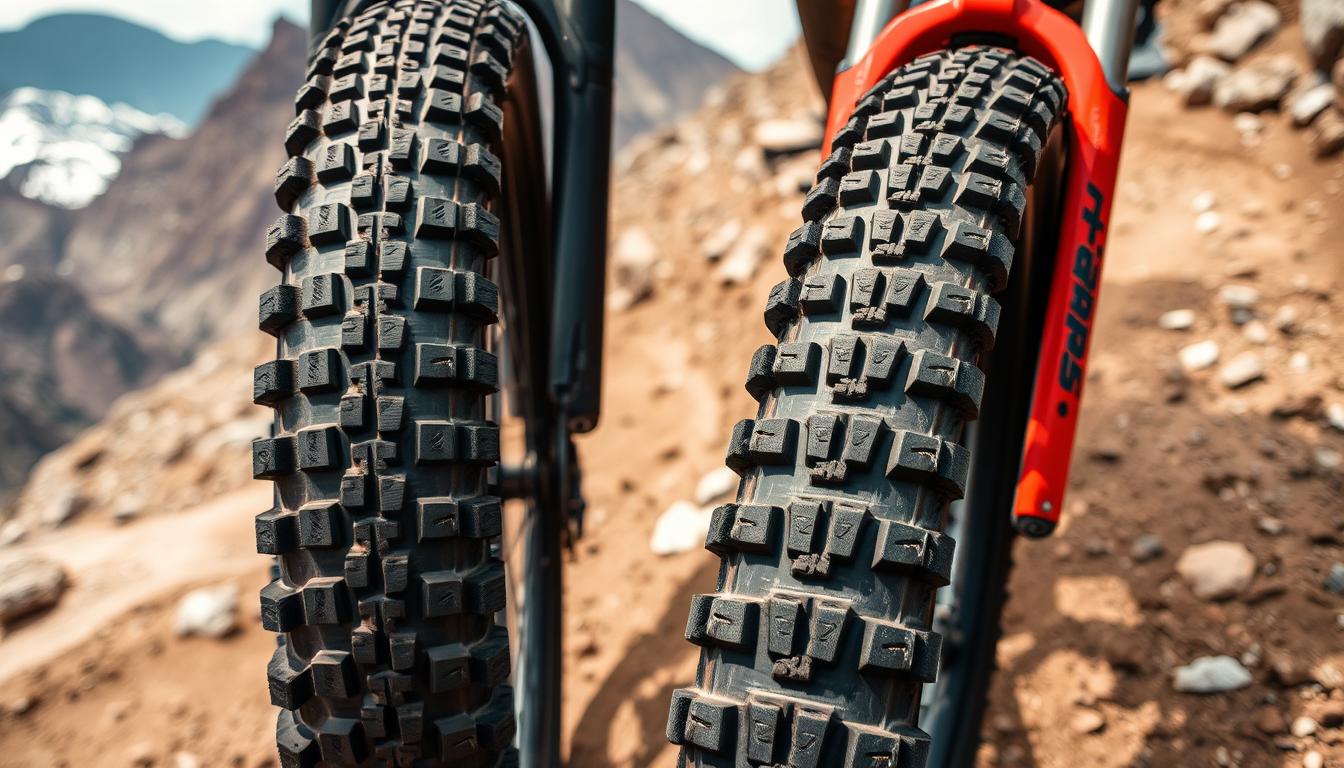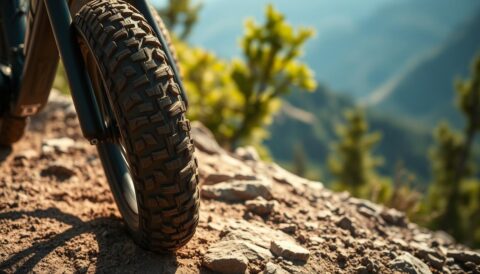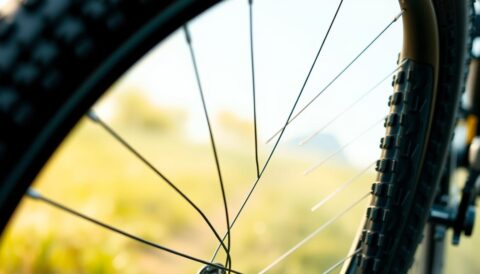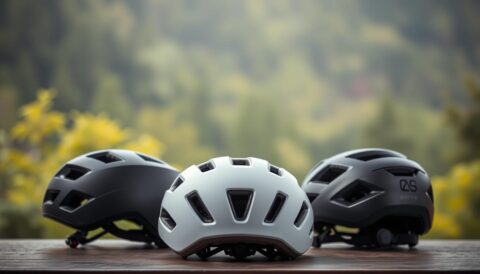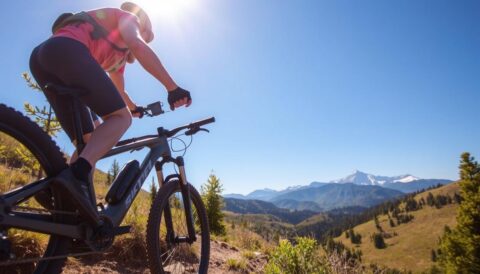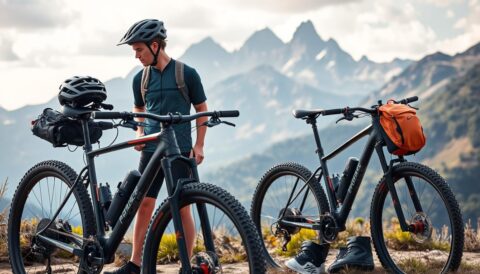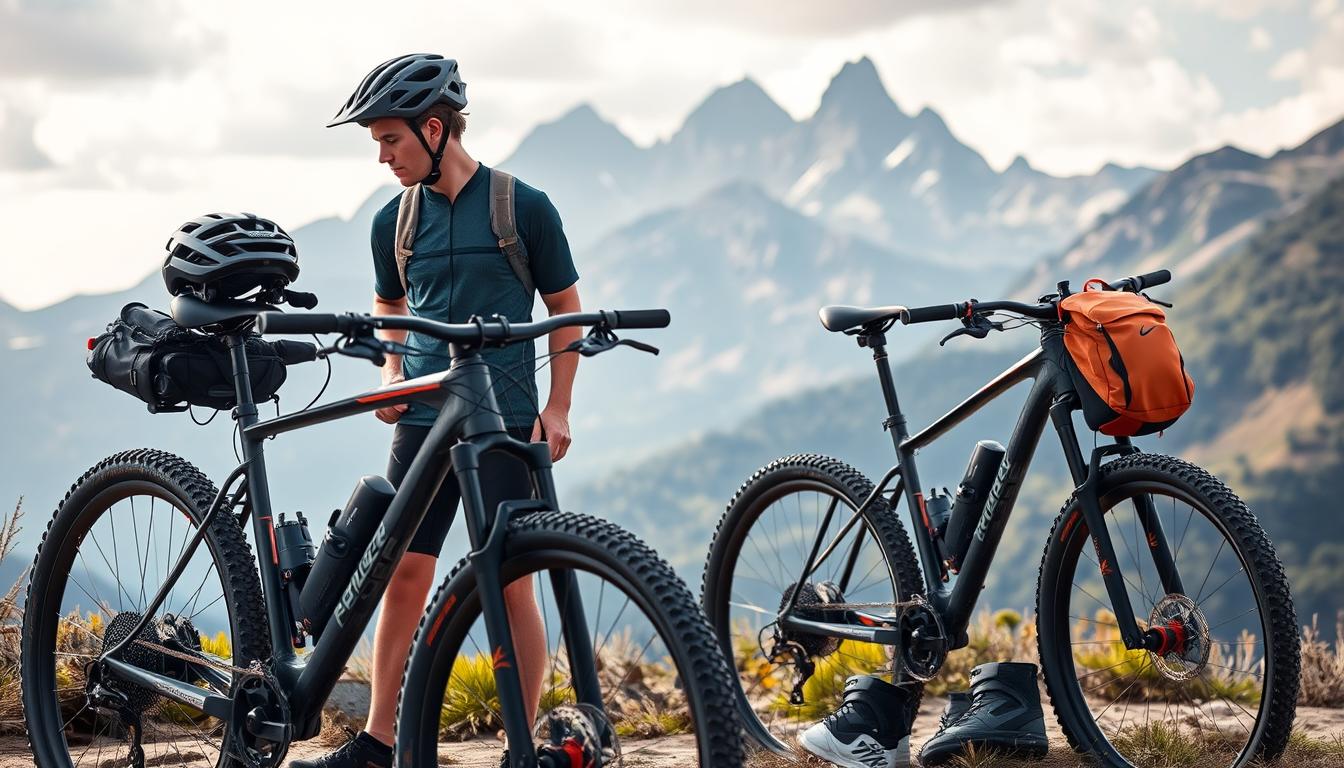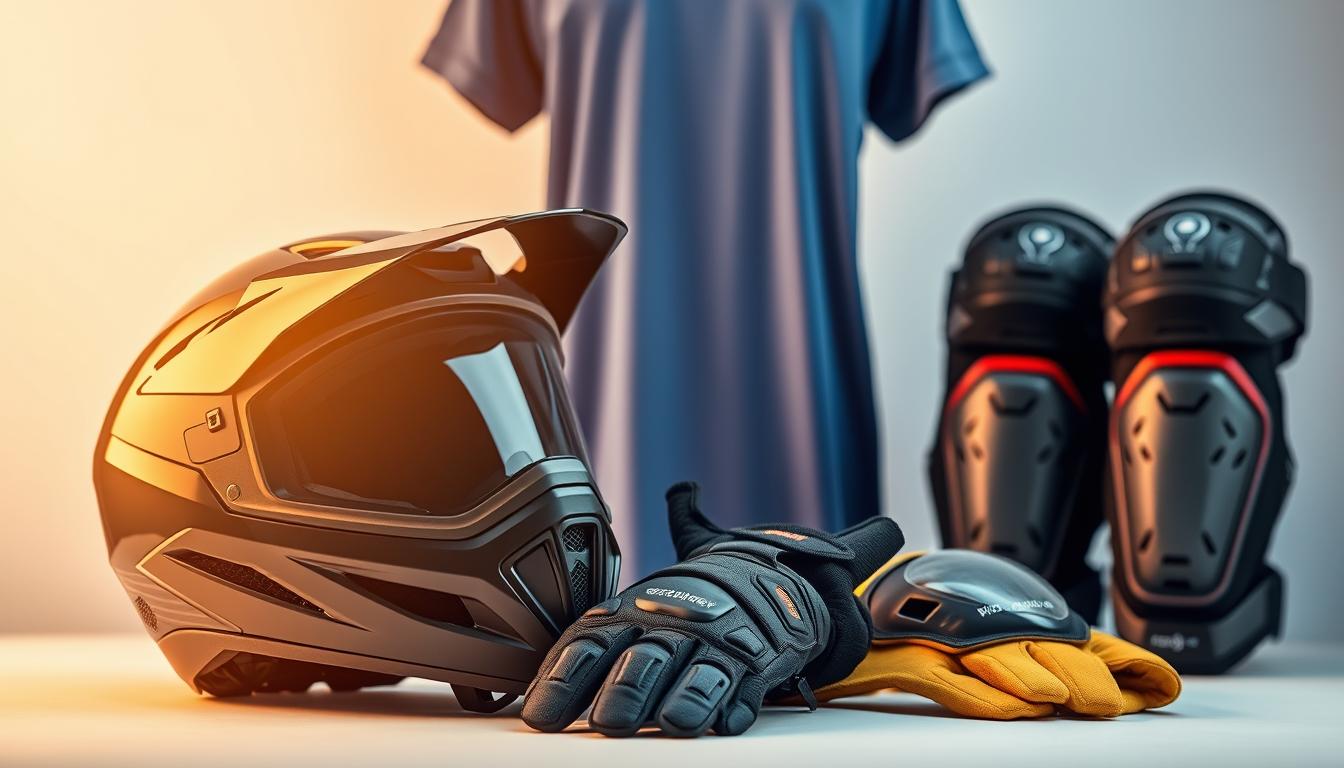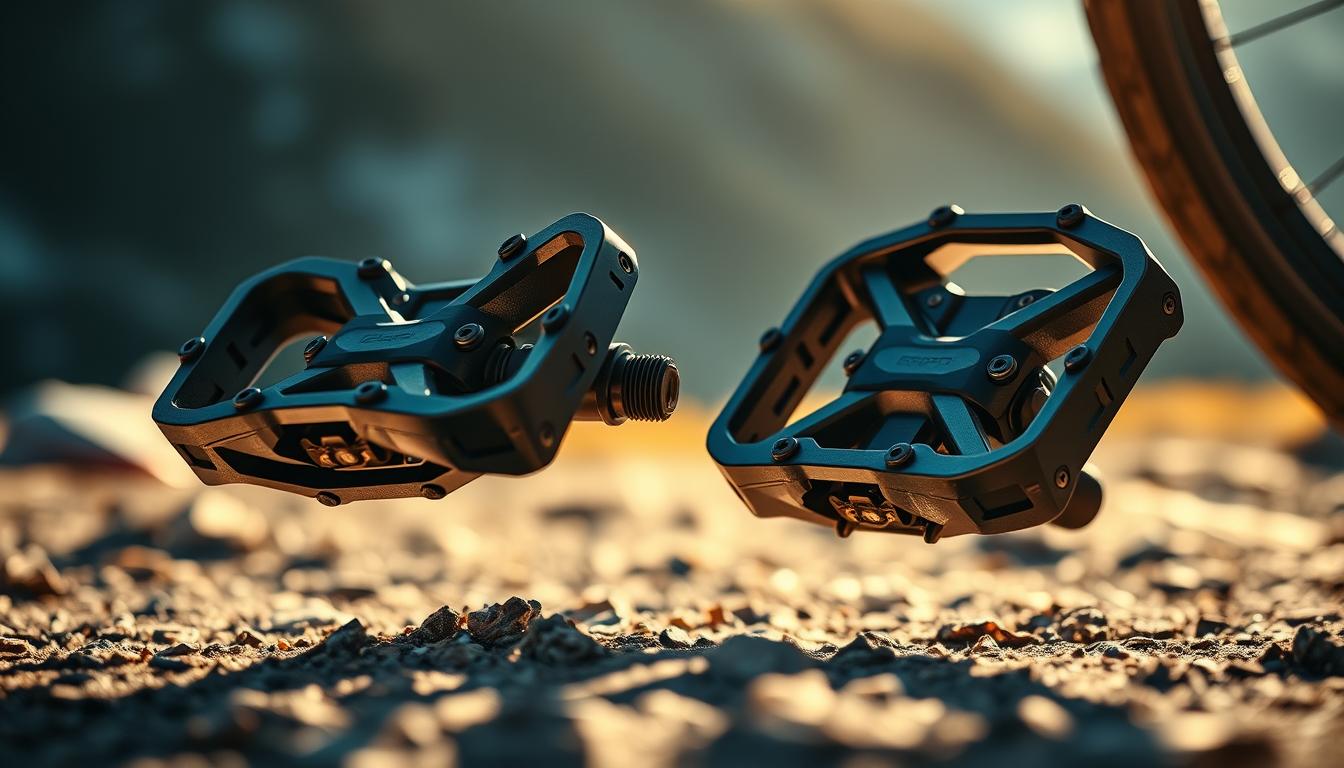Freeride mountain biking requires top-notch tyres for intense jumps and tough terrain. Quality tyres are vital for riders pushing their limits on extreme trails1.
Selecting big jump tyres means understanding how design affects ride quality and safety. Riders need tyres with excellent grip, durability, and impact resistance for high-intensity jumps2.
Pro mountain bikers know freeride tyres are more than just rubber parts. They’re precision-engineered systems that absorb shock and maintain traction during complex aerial moves1.
The best tyres use advanced rubber compounds and robust construction. They also have strategic tread patterns for optimal performance in various conditions.
Whether tackling rocky descents or massive jumps, the right tyre is crucial. It can greatly enhance a rider’s experience on the trails2.
Understanding Tyre Construction and Impact Resistance
Mountain bike tyres are engineered marvels built for extreme conditions. The right tyre construction can greatly affect a rider’s performance and safety during freeride adventures.
Casing Types and Their Impact Protection
Tyre casing is vital for protecting riders from harsh terrain impacts. Mountain bike tyres use multiple layers of protective materials for durability and performance3.
Two main TPI (Threads Per Inch) configurations are used:
- 60 TPI: Thicker, stiffer threads providing robust impact resistance3
- 120 TPI: Thinner threads creating a more flexible and lighter tyre3
Weight Considerations for Jump-Specific Tyres
Freeride tyres strike a balance between weight and durability. Widths range from 2.35 to 2.6 inches, depending on riding style4.
Competitive riders often choose tyres around 2.4 inches wide. These offer a good mix of performance and weight4.
The Role of Compound Technologies
Tyre compounds are crucial for grip and durability in tough terrains. Different rubber formulations offer unique features. Some focus on impact resistance, while others prioritise rolling speed5.
The right tyre is not just about width or weight, but about understanding how different construction technologies interact with your riding style.
Choosing the perfect mountain bike tyre requires understanding these technical details. It’s about matching them to your specific riding needs. Selecting the right tyre construction is key to enhancing your ride.
Best Freeride Bike Tyres for Big Jumps
The right tyre can revolutionise your freeride mountain biking. It impacts performance, safety, and riding confidence. Pro riders know this well67.
Mountain bike tyres have come a long way. They now cater to specific riding styles and demands. Understanding tyre characteristics helps you choose wisely7.
Maxxis Minion DHF 3C/EXO Performance
The Maxxis Minion DHF is a legendary tyre with countless wins. It’s a top choice for freeride enthusiasts6.
This versatile tyre works well on front or rear wheels. It provides consistent grip and durability across various terrains6.
- Exceptional cornering capabilities
- Proven reliability in competitive environments
- Available in multiple casing options
Specialized Butcher GRID Trail Features
The Specialized Butcher GRID Trail tyre offers enhanced grip and a smoother ride. Its T9 compound ensures superior traction. It’s ideal for aggressive freeride mountain biking7.
Vittoria Mazza Jump Capabilities
Vittoria Mazza boasts an aggressive tread pattern for challenging jumps. It provides excellent cornering and braking traction. This tyre is crucial for controlling high-intensity freeride manoeuvres7.
| Tyre Model | Key Features | Best Suited For |
|---|---|---|
| Maxxis Minion DHF | Versatile grip, multiple wins | Front/Rear wheel use |
| Specialized Butcher | T9 compound, enhanced traction | Aggressive riding |
| Vittoria Mazza | Aggressive tread, strong cornering | Technical jumps |
Choosing the right tyre is about matching your specific riding style and terrain requirements.
Optimal Tyre Pressure for Big Air Performance
Tyre pressure is crucial for exceptional big air performance in mountain biking. The right pressure ensures smooth landings and prevents wipeouts. Professional riders know that pressure optimisation varies for each rider.
Rider weight greatly affects ideal tyre pressure settings. Here are pressure recommendations for various rider weights:
- Riders under 60 kg: 14-18 psi front, 17-20 psi rear8
- Riders 60-70 kg: 17-19 psi front, 20-22 psi rear8
- Riders 70-80 kg: 20-22 psi front, 23-25 psi rear8
- Riders 80-90 kg: 22-24 psi front, 24-27 psi rear8
- Riders over 90 kg: 24-26 psi front, 27-28 psi rear8
Consider these key factors when setting tyre pressure for big air performance:
- Tubeless Setup: Always base measurements on a tubeless configuration8
- Terrain Adaptation: Adjust pressures based on specific riding conditions9
- Weight Distribution: Typically, rear tyres require 2-3 psi more than front tyres9
“Tyre pressure is an art, not just a science. Experiment and find your perfect balance.” – Professional Mountain Bike Rider
These recommended pressures are just starting points. Riders should experiment to find their ideal tyre pressure. Pay attention to grip, stability, and overall big air performance during your tests.
Tyre Casing Technology for Heavy Impact Protection
Advanced tyre casing technology is crucial for managing intense mountain biking conditions. Impact protection and reinforced sidewalls are vital for riders tackling challenging terrain. These features help bikers navigate big jumps and rough trails safely10.
Advanced Casing Constructions for Durability
Double-Down and Super Gravity construction are two leading tyre casing technologies in mountain biking. These designs offer critical protection against heavy impacts and terrain challenges.
- Double-Down offers exceptional stability
- Super Gravity provides maximum impact resistance11
Reinforced Sidewall Benefits
Reinforced sidewalls are crucial for aggressive riders. They enhance tyre casing technology by improving overall performance and safety.
- Increasing puncture resistance
- Improving overall stability
- Reducing potential damage during intense jumps12
Impact Protection Systems
Modern mountain bike tyres feature sophisticated impact protection systems. The Schwalbe Albert Pro showcases innovative radial casing options10.
- 2.4″ and 2.6″ widths
- Compatible with 27.5″ and 29″ wheels
- Designed for mountain bikes and eMTBs
Effective impact protection is not just about strength, but strategic design and material selection.
Combining Front and Rear Tyre Setups
Crafting perfect front and rear tyre combinations is an art in mountain biking. Riders must balance grip, rolling resistance, and durability for optimal performance. Expert mountain bikers recommend specific tyres that enhance overall bike handling13.
- Front Tyre Priorities: Focus on cornering grip and braking traction14
- Rear Tyre Considerations: Prioritise rolling resistance and durability14
- Match tread patterns for consistent performance
Popular tyre combinations emerge from thorough testing. Cross-country racers often choose dual Aspen 2.4 tyres for speed and reliability13.
Another top setup is a Rekon 2.4 3C front with an Ikon 2.35 Maxx Speed rear. This combo offers great grip and rolling performance on varied terrain13.
The right tyre pairing can transform your riding experience, balancing speed and control across diverse landscapes.
Front and rear tyres serve different purposes. The front tyre affects cornering and braking traction significantly. The rear tyre mainly influences rolling resistance14.
Understanding these roles helps riders create balanced setups for their specific riding conditions. This knowledge leads to improved performance and enjoyment on the trails.
Maintenance and Longevity for Jump-Specific Tyres
Proper tyre upkeep is vital for mountain bikers tackling extreme jumps and freeride adventures. Regular checks can boost performance and safety. Monitoring wear and inspecting tyres often extends their lifespan15.
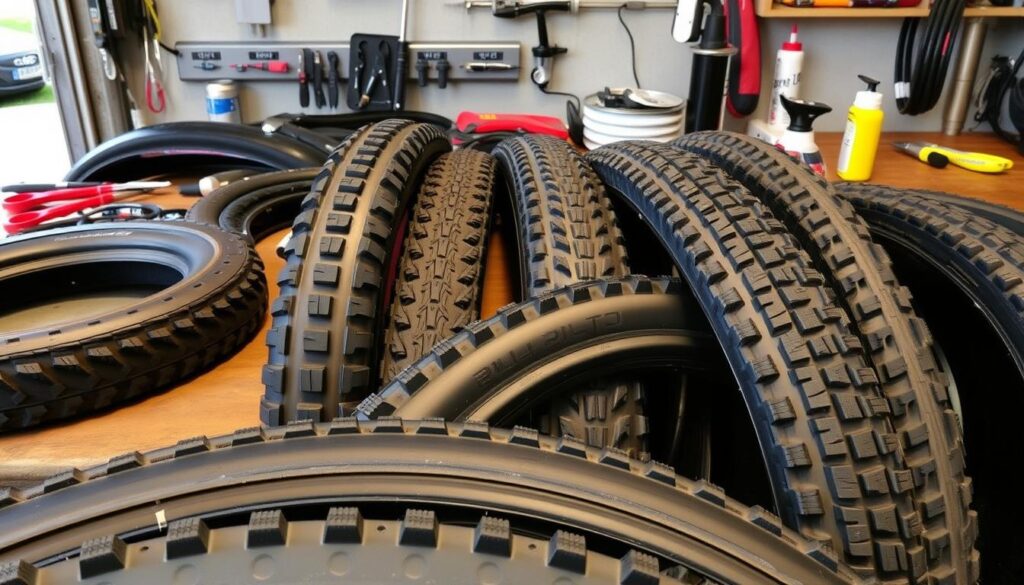
Understanding Wear Patterns
Mountain bike tyres show various wear patterns that hint at potential issues. Tread degradation reveals insights about riding style and tyre health.
Using tyre inspection techniques helps spot early signs of wear15. This can prevent problems before they become serious.
- Check centre tread for uneven wearing
- Inspect sidewalls for cracks or damage
- Look for embedded objects that might compromise integrity
Regular Inspection Checklist
Thorough tyre care involves systematic checks. Riders should examine tyres before and after intense riding sessions15.
- Measure tread depth regularly
- Check for sidewall integrity
- Evaluate overall tyre condition
Replacement Timeline Guidelines
Most mountain bike tyres last about 5,000 kilometres, depending on riding conditions and care15. Several factors affect when to replace tyres.
| Wear Indicator | Replacement Recommendation |
|---|---|
| Significant tread loss | Replace immediately |
| Sidewall cracks | Consider replacement |
| Reduced traction | Evaluate tyre performance |
Proactive maintenance prevents unexpected failures and ensures optimal performance during challenging rides.
Tubeless setups can boost tyre reliability and lower puncture risks. They’re great for serious mountain bikers15.
Top up sealant regularly and manage pressure carefully. These steps help tyres last longer16.
Conclusion
Choosing freeride mountain bike tyres involves balancing technical know-how and personal style. It’s about matching advanced tyre tech to your performance needs17. Riders must consider casing, compound resilience, and impact protection systems.
Finding perfect big jump performance requires careful testing and tech awareness. Different terrains need specific tyre traits, with weight, pressure, and sidewall strength being crucial18. Riders should focus on tyres offering reliable grip, durability, and responsive handling.
Tyre innovations keep pushing design limits. Manufacturers are creating sophisticated compounds and construction techniques for better safety and performance19. Successful tyre selection depends on understanding your riding needs and testing various setups.
Mountain biking blends personal preference with cutting-edge engineering. Staying informed about new tyre tech and experimenting can improve your big jump performance. This approach enhances your overall riding experience.
FAQ
What makes a tyre suitable for freeride mountain biking and big jumps?
Freeride mountain bike tyres need robust casing and excellent impact resistance. They require a specialised compound for superior grip and durability. Reinforced sidewalls and appropriate tread patterns are crucial features.
How important is tyre pressure for big jump performance?
Tyre pressure is vital for big jumps, affecting grip, stability, and impact absorption. It balances traction and prevents pinch flats. Optimal settings vary based on rider weight, tyre width, and terrain.
Should I use different tyres for front and rear wheels?
Different tyres can enhance overall bike handling. Riders often choose an aggressive front tyre for better cornering grip. A faster-rolling rear tyre balances performance and efficiency.
How often should I replace my freeride mountain bike tyres?
Replace tyres when you notice significant centre tread wear or sidewall damage. Cuts or tears that compromise structural integrity also warrant replacement. Regular inspections help determine the right replacement timeline.
What are the best tyre compounds for freeride mountain biking?
Top compounds like Maxxis’ 3C and Specialized’s T9 offer excellent grip and durability. These advanced rubber technologies provide enhanced traction for challenging terrain. They also offer crucial impact resistance for big jumps.
How do I choose the right tyre casing for big jumps?
Select casings like Double-Down or Super Gravity for robust sidewall protection. These offer excellent impact resistance for big jumps. Consider your riding style, terrain, and weight when choosing.
Can I use the same tyres for different types of mountain biking?
While possible, specialised freeride tyres are optimised for specific riding styles. Tyres for big jumps differ from cross-country or trail riding tyres. They have unique construction and compound features.
What signs indicate I need to replace my mountain bike tyres?
Look for significant tread wear and exposed casing. Sidewall damage and frequent punctures are also warning signs. Reduced grip suggests your tyres have reached the end of their safe lifespan.
Source Links
- Maxxis mountain bike tyres buyer’s guide: deciphering the Maxxis XC, trail and enduro range
- What’s the Best MTB Front Tire? | Vital MTB Roundup
- Demystifying mountain bike tyre carcass construction: everything you need to know
- How To Choose the Best Mountain Bike Tire Width
- The Art of Traction: An MTB Tyre Guide
- Maxxis Tires Simplified – The Best MTB Tire Combos For Your Bike [Video]
- The Art of Traction: An MTB Tyre Guide
- How to find the perfect tire pressure for your mountain bike
- Mountain Bike Tire Pressure Chart & Guide
- The Future of Mountain Bike Tires? Schwalbe Radial Tire Casing
- The best tire inserts for mountain biking – 5 tire inserts in direct comparison
- The Complete Guide to Specialized Mountain Bike Tires
- Maxxis XC Tires Long Term Testing & Favorite Combos w/ Liam Woods
- Why Don’t Gravel Riders Mix Tire Tread Patterns, Front & Back?
- Changing Mountain Bike Tire: When and How
- Mountain Bike Tires 101 | Jenson USA
- Trail and Enduro MTB Tyre Test – 24 tyres ridden and rated – Australian Mountain Bike
- Best Mountain Bike Tires 2020 – Bikers Edge
- Best mountain bike wheels reviewed and rated by experts – MBR
